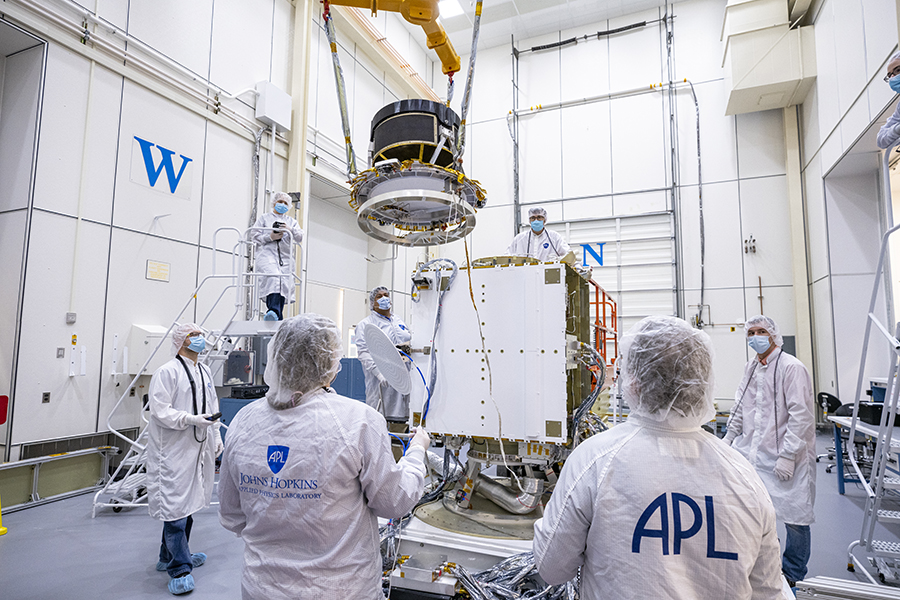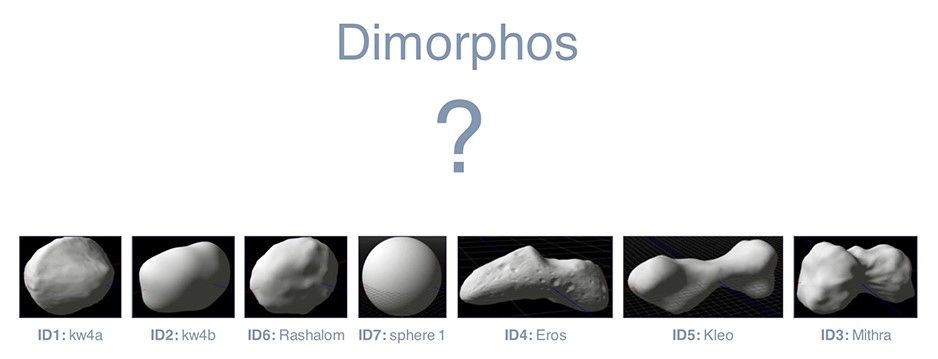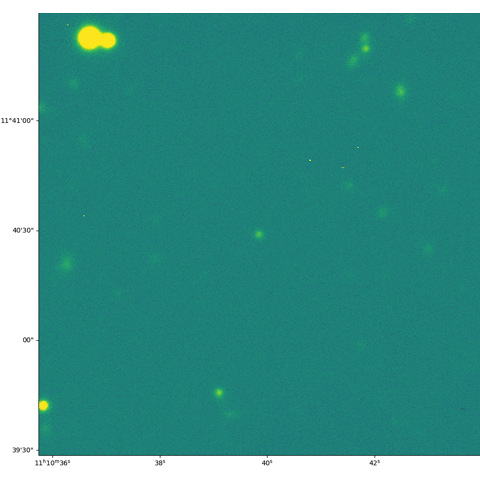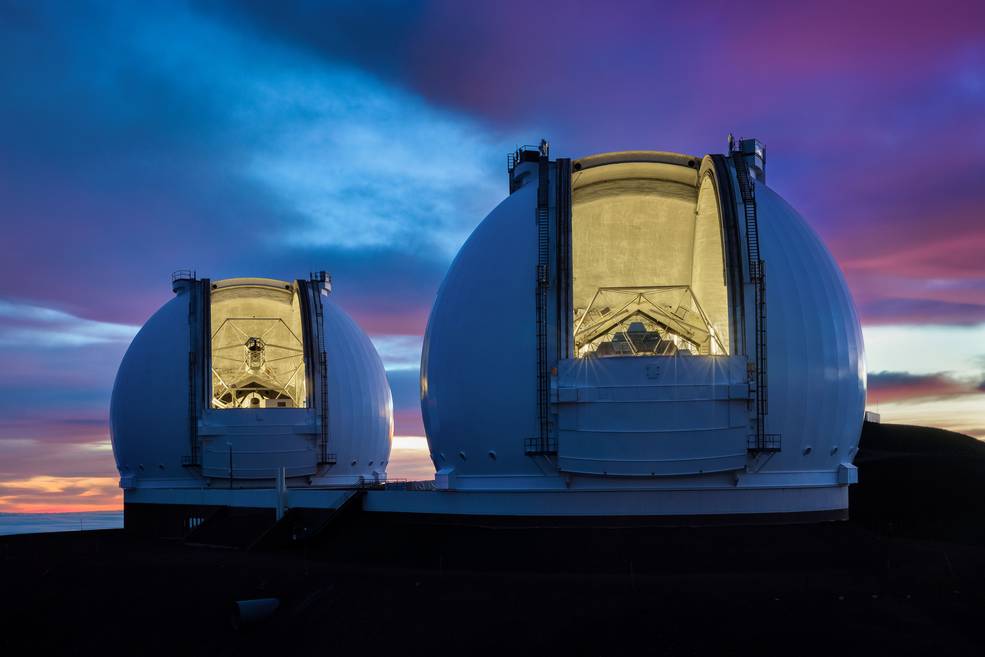News & Resources
01/15/2021
DART Team Takes a Last Look at Asteroid Target Before Launch

Credit: Credit: NASA/Johns Hopkins APL/Ed Whitman
NASA's Double Asteroid Redirection Test (DART) will be the first demonstration of a kinetic impactor: a spacecraft that will deliberately strike an asteroid at high speed to change the object's motion in space. Launching in 2021, the DART mission is designed to demonstrate this critical planetary defense capability. With less than a year until launch, DART is currently coming together at the Johns Hopkins Applied Physics Laboratory (APL) in Laurel, Maryland.
DART's Investigation Team Embarks on Final Prelaunch Observation Campaign
As integration and testing continue on the spacecraft, DART's investigation team has kicked off the mission's final prelaunch observation campaign, using powerful telescopes located around the world to get a glimpse of the asteroid system that DART will encounter next year.
The observation campaign — which officially started on Dec. 10 — is one of the last chances to see the double asteroid system comprising Didymos and its small, orbiting moonlet, Dimorphos. In 2022, DART will pummel into the latter, a boulder about 160 meters (525 feet) in diameter, and is expected to change its orbital period around Didymos by about 10 minutes, thus proving one effective method of planetary defense.
We Don't Really Know What DART's Target Looks Like
In fact, little is known about the asteroid that DART aims to strike. Even the exact shape and structure of Dimorphos remain a mystery. What scientists do know is fairly limited and relies heavily on extensive modeling and simulation and periodic telescope observations, which help further characterize the behavior of the asteroid system.
The international campaign coordinated by Northern Arizona University's Cristina Thomas, DART's observing working group lead, is making these critical observations to understand the state of the asteroid system prior to impact.
The Didymos System Is Now Optimally Positioned for Observations
For the next two months, the Didymos system will be at its closest to Earth until the summer of 2022, making it possible to see with the aid of telescopes.
Even then, Didymos and Dimorphos will still appear as little more than a point of light through even the most powerful telescopes. But according to DART investigation team co-lead Andy Rivkin, that's OK.
"What we're looking for is the light curve, and measuring the change in that brightness," said Rivkin, of APL's Space Exploration Sector, who is participating in the observation campaign from Maryland.
The brightness changes indicate when the smaller moon, Dimorphos, passes in front of or is hidden behind Didymos from Earth's point of view. Precise knowledge of Dimorphos' orbital period, or how long it takes it to make one trip around the larger body, is essential for the DART mission. Repeated observations of the system enable more accurate predictions of where Dimorphos is at any given moment — including the moment of impact. These observations will help scientists determine the location of both asteroids and inform the exact timing of DART's impact to maximize the deflection.
Observing From Home
Instead of traveling to various observatories and telescope sites, the investigation team will gaze at the sky from the comfort of their homes.
Because of COVID restrictions on travel, the team will virtually connect to a variety of telescopes spanning the globe, including the Lowell Discovery Telescope and Large Binocular Telescope Observatory in Arizona; the Palomar Observatory in California; the Keck Observatory, Gemini Observatory and Canada France Hawaii Telescope in Hawaii; the Pic du Midi Observatory and Asiago Astrophysical Observatory in France; and the Galileo National Telescope, Gran Telescopio Canarias and Nordic Optical Telescope in Spain.
Understanding Dimorphos' Behavior
Download MP4
Credit: NASA/Johns Hopkins APL/Mike Yakovlev
When the observation campaign wraps up in February of this year, the DART team hopes to have a better understanding of Dimorphos' behavior.
The final observations will also help determine the spacecraft's approach in 2022.
"We need to understand the orbit of Dimorphos better than we know it now so that we can target the timing of DART's arrival," said Rivkin.
"We would like to hit Dimorphos head on, but also need to take into account the time of day on Earth for reasons of communications with [the spacecraft]. DART will only be carrying a limited amount of fuel, so it won't be able to change its arrival time by too much after launch, so we need to decide the arrival time in the next couple of months. That means we need to improve our knowledge of Dimorphos' orbit now."
The investigation team will plan for follow-up observations after impact to see just how much DART effectively changed Dimorphos' orbit around Didymos.
"Though DART will meet its fate by ramming into Dimorphos and it'll essentially be the end of the spacecraft, it will be just the start of the science," said Rivkin.




